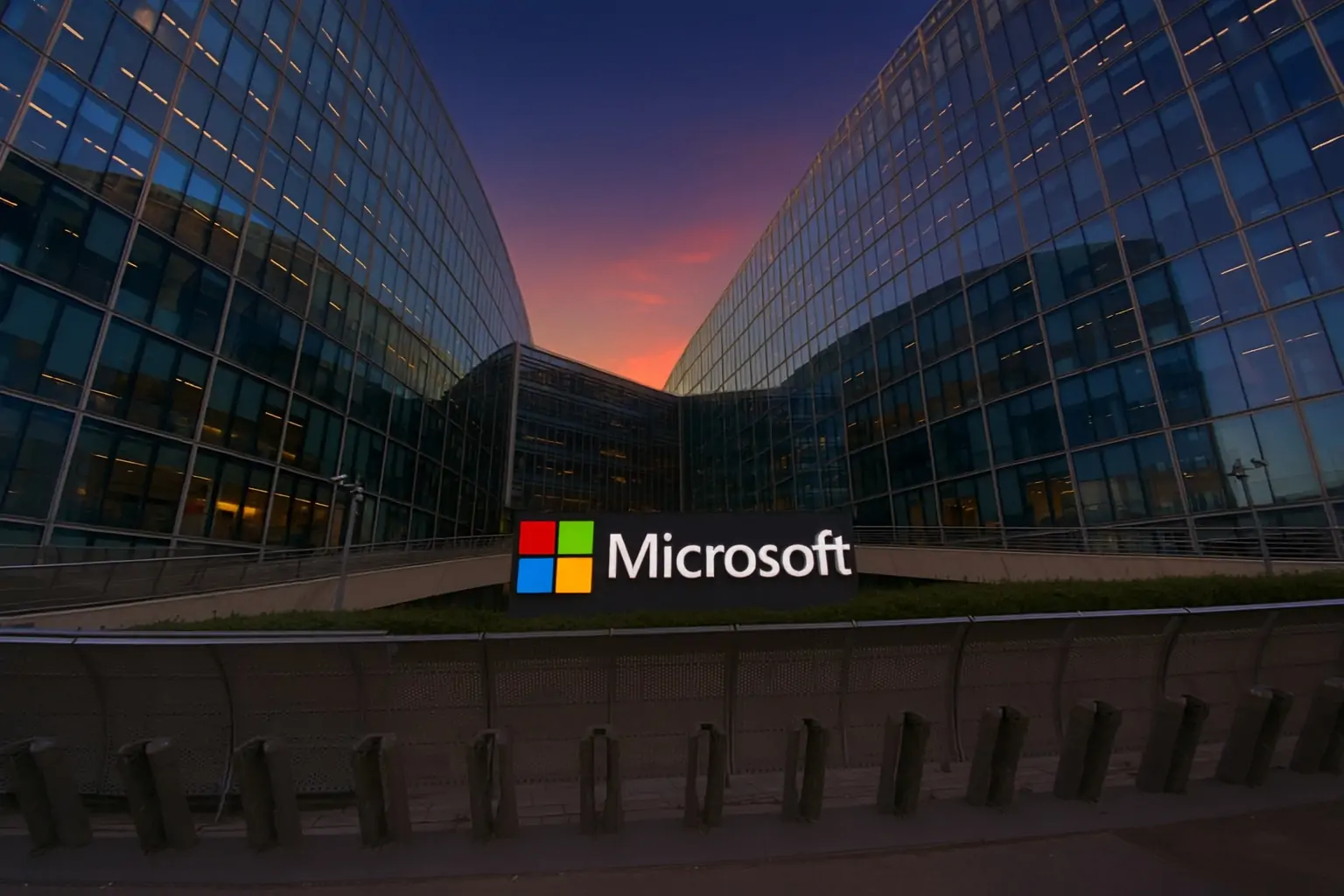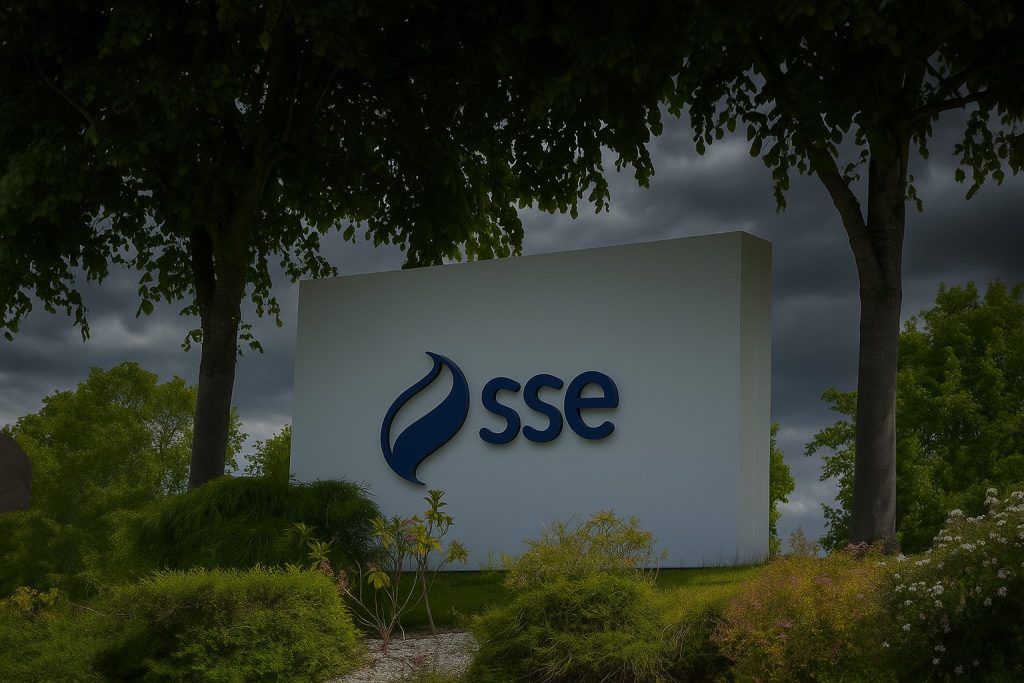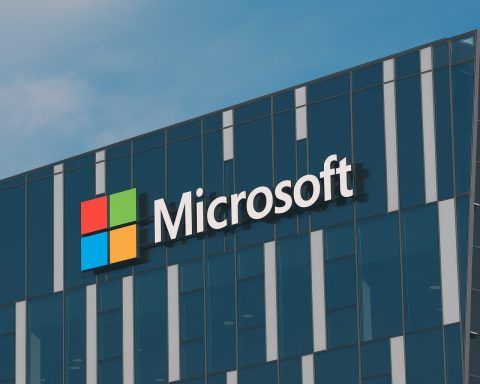Published: November 20, 2025 — All market data as of Thursday morning (U.S. premarket)
Quick snapshot: Where Microsoft stock stands today
Microsoft (NASDAQ: MSFT) heads into Thursday’s session caught between powerful bullish and bearish forces in the artificial intelligence (AI) trade.
- Last close (Wed, Nov 19): MSFT finished at $487.12, after trading between $482.83 and $495.19 on the day. That marked its second straight daily decline and extended a multi-session pullback from the $500+ area. [1]
- Overnight / premarket: Real‑time feeds show MSFT changing hands around $487 in overnight trading, essentially flat versus Wednesday’s close. [2]
- Recent performance: Over the last two sessions Microsoft has slipped roughly 4–5%, giving back part of what is still a ~20% gain for 2025, ahead of the S&P 500’s ~13% rise, according to Investor’s Business Daily. [3]
- Size and valuation: At today’s levels Microsoft is valued at about $3.9 trillion, trading on roughly 37 times trailing earnings, firmly in premium territory among mega‑cap tech names.
- 52‑week range: Nasdaq data show a 52‑week range of $344.79 to $555.45, so the stock is currently trading well below its recent high but still far above last year’s lows. [4]
Against that backdrop, several fresh headlines on November 20, 2025 are shaping sentiment around Microsoft stock: AI mega‑deals, warnings about an AI bubble, a key dividend date and the fallout from this week’s Ignite 2025 announcements.
1. Nvidia earnings jolt tech higher — and pull Microsoft along
The immediate market backdrop for MSFT today is Nvidia’s blowout earnings report.
- U.S. futures rally: U.S. stock index futures jumped on Thursday after Nvidia forecast stronger‑than‑expected sales, easing some fears that the AI boom had already peaked. [5]
- Tech leads the move: Reuters reports that most megacap growth stocks traded higher in premarket, with Microsoft up about 1.1% alongside Alphabet and other AI beneficiaries. [6]
This bounce comes after several days in which concern about AI over‑investment had weighed on the “Magnificent Seven,” including Microsoft. Nvidia’s numbers have temporarily put the AI narrative back on the front foot, but for Microsoft that optimism is colliding with a very different set of headlines.
2. Anthropic megadeal: $30B in Azure spend, up to $5B from Microsoft
The biggest strategic story hanging over Microsoft stock this week is its new three‑way partnership with Anthropic and Nvidia.
What the deal actually does
- Scale of commitment: According to Reuters and other outlets, Anthropic — maker of the Claude family of AI models — has agreed to spend about $30 billion on Microsoft’s Azure cloud compute under a long‑term commitment. [7]
- Cash investments:
- Nvidia: up to $10 billion invested in Anthropic.
- Microsoft: up to $5 billion invested, on top of its existing OpenAI stake and AI infrastructure build‑out. [8]
Microsoft CEO Satya Nadella has framed the arrangement as a mutual customer relationship: Microsoft will consume Anthropic’s models, Anthropic will consume Azure compute, and the two will go to market together. [9]
Why investors are divided
On paper, this looks like a major win for Azure: a $30B usage commitment from one of the fastest‑growing AI labs on the planet. But several commentators today are highlighting a more controversial angle:
- A “circular” AI economy? An analysis at InvestorsObserver notes that Nvidia, Microsoft and Anthropic are effectively funding, supplying and buying from one another, recycling billions of dollars within a small club of firms and potentially propping up high AI valuations through these intertwined deals. [10]
- Bubble risk: The same piece points to research suggesting that U.S. AI data centers would need far more revenue than they currently generate to earn normal returns, raising the risk that today’s AI build‑out resembles a “war‑time economy” of heavy strategic spending with uncertain payback. [11]
For MSFT shareholders, this Anthropic tie‑up is therefore a double‑edged sword: it reinforces Microsoft’s central role in generative AI, but it also ties the company even more tightly to an AI economy that some believe may be over‑built and over‑valued.
3. Redburn downgrade and AI capex fears hit Microsoft stock
Those worries are front and center in a widely discussed analyst note that continues to shape trading in Microsoft and Amazon this week.
“Get real” on AI economics
- Downgrade: Rothschild & Co Redburn analyst Alex Haissl has downgraded Microsoft from “Buy” to “Neutral” and cut his price target from around $560 to $500, arguing that investors need to “get real” about the economics of generative AI. [12]
- Key concern — capital intensity:
- Haissl estimates that GPU‑heavy AI workloads require roughly six times more capital to generate the same value as the earlier “cloud 1.0” era.
- He argues that revenue per gigawatt of capacity has fallen sharply (from something like $17B to around $11B per GW), making Microsoft’s AI infrastructure structurally more capital‑intensive and potentially less profitable over time. [13]
- Value leakage: The note also highlights “value leakage” when Microsoft embeds third‑party models (like OpenAI or Anthropic) into Office 365 and other products, because some of the economic upside flows to partners instead of shareholders. [14]
A separate MarketWatch piece summarizing this research warns that both Amazon and Microsoft’s stocks could be pressured by AI’s “destructive economics” if capital expenditures remain elevated and returns stay muted. [15]
Price action: a 5% slide in two days
Trading desks have linked this wave of AI‑capex skepticism — combined with broader tech selling — to Microsoft’s recent drop:
- FX and equities commentary notes that Microsoft stock has fallen roughly 5% over the last two trading days, even as it remains up solidly year‑to‑date. [16]
So while Nvidia’s earnings are giving AI stocks a lift this morning, the overhang from these AI‑economics warnings is one reason MSFT isn’t bouncing more aggressively.
4. AI bubble talk intensifies — and Michael Burry calls out Microsoft
Adding fuel to the fire, Michael Burry — famous for “The Big Short” — weighed in overnight on the AI trade:
- Burry told Investing.com that true end demand for AI is “far smaller than what is being presented” and accused major tech firms of questionable revenue recognition around AI deals. [17]
- He reportedly shared a graphic linking Microsoft, OpenAI, Oracle and Nvidia through a web of AI funding and cloud‑spend commitments, suggesting that future observers might see this not as a “flywheel” but as a potentially fragile financial loop. [18]
While Burry didn’t single out Microsoft in isolation, his comments land directly on the kind of Anthropic‑style agreements that Microsoft has been announcing — and they reinforce the skepticism already expressed by Haissl and others.
5. Sovereign cloud push: Microsoft signs Saudi MoU
Beyond AI labs, Microsoft today is also in the news for expanding its sovereign‑cloud footprint.
- Reuters reports that Saudi Arabia’s Public Investment Fund (PIF), local IT firm SITE, and Microsoft have signed a memorandum of understanding to explore delivery of Microsoft sovereign‑cloud services in the kingdom. [19]
While the MoU doesn’t yet include hard revenue figures, it highlights two things important to MSFT investors:
- Azure’s global reach: Sovereign cloud offerings are increasingly key to winning government and regulated‑industry workloads, especially in regions with strict data‑residency rules.
- Long‑term stickiness: National‑scale cloud relationships tend to be multi‑year and infrastructure‑heavy, which can reinforce Azure’s long‑term growth runway, even if the near‑term margins look pressured by AI build‑out.
6. Ignite 2025 fallout: Copilot and AI agents everywhere
Another key driver of Microsoft’s narrative this week is Ignite 2025, the company’s flagship developer and enterprise conference.
Copilot and “Frontier Firms”
At Ignite 2025, Microsoft unveiled a sweeping vision of “Frontier Firms” — human‑led, agent‑operated organizations — and launched major updates to its Copilot stack: [20]
- Work IQ: a new intelligence layer inside Microsoft 365 Copilot that learns from a user’s emails, files, meetings and chats to personalize AI responses.
- Word, Excel and PowerPoint agents in chat: users can now interact with AI agents in Copilot Chat to iteratively build documents, spreadsheets and presentations.
- Agent 365: a control plane to manage and secure fleets of AI agents across an organization.
Microsoft says more than 90% of the Fortune 500 already use Microsoft 365 Copilot, and Ignite focused heavily on helping those customers scale from a few copilots to hundreds or thousands of AI agents embedded in day‑to‑day workflows. [21]
Richer Copilot features in everyday apps
TechRadar’s coverage of Ignite details several concrete upgrades likely to matter for adoption: [22]
- Excel: Agents can turn raw data into charts, summaries and insights, and new “Agent Mode” features can pull external data from the web and even let users choose between Anthropic and OpenAI models for reasoning tasks.
- Word & PowerPoint: Agents help assemble long documents from scattered sources and build on‑brand presentation decks, updating and re‑styling slides automatically.
- Outlook: Copilot can now resolve scheduling conflicts, propose meeting times, draft agendas, and even respond to voice commands on mobile to summarize, delete or draft emails.
From a stock perspective, Ignite 2025 reinforces the bullish long‑term thesis: Microsoft is deeply embedding AI across productivity, security and data platforms, creating multiple monetization levers beyond pure cloud compute.
But as critics like Haissl and Burry point out, these products also depend on expensive underlying infrastructure — exactly what’s driving concerns about AI’s long‑run profitability.
7. Dividend day: MSFT goes ex‑dividend at $0.91 per share
For income‑oriented investors, today is also a key date on the Microsoft calendar.
- Microsoft’s board previously announced a quarterly dividend of $0.91 per share, an increase of 10% from the prior $0.83 payout, marking the company’s 21st consecutive year of dividend growth. [23]
- The dividend is payable December 11, 2025 to shareholders of record on November 20, 2025, and today, November 20, is both the record date and the ex‑dividend date. [24]
Because the stock goes ex‑dividend today, its price typically adjusts downward by roughly the dividend amount at the open, all else equal. With a share price around $487, the annualized yield is still under 1%, so Microsoft remains firmly a growth‑first story with a modest dividend kicker, not a high‑yield income stock. [25]
Microsoft also confirmed that its 2025 Annual Shareholders Meeting will be held virtually on December 5, 2025, giving management another platform to defend its AI strategy and capex plans in front of investors. [26]
8. Flows and positioning: Mixed institutional moves, speculative bets
A number of smaller but still notable datapoints around flows and positioning have hit today’s news wires:
- Institutional rebalancing: Fresh MarketBeat summaries show some institutional investors (such as Whittier Trust Co. of Nevada) adding to MSFT positions, while others (like Pittenger & Anderson) have trimmed holdings, reflecting no clear consensus shift but active rebalancing around current levels. [27]
- CDR and international demand: In Canada, research on Microsoft’s CDR (Canadian Depositary Receipt) with currency hedging highlights trading strategies and risk controls specific to MSFT:CA, underscoring ongoing global appetite for Microsoft exposure even outside the U.S. listing. [28]
- Prediction markets: On Polymarket, traders are speculating on whether MSFT will close up or down today versus Wednesday’s $487.12 close, using Nasdaq’s official final price as the resolution source. [29]
These data points don’t fundamentally change the thesis, but they show how actively traded and closely watched Microsoft remains as a bellwether for the entire AI complex.
9. Is Microsoft stock still a buy after the pullback?
So what does all of this mean if you’re looking at MSFT on November 20, 2025?
The bullish case, in brief
- AI platform leader: Between OpenAI, Anthropic and its own Copilot ecosystem, Microsoft sits at the center of the generative AI stack — from chips in its data centers to models, developer tools and end‑user apps. [30]
- Durable cloud demand: Deals like Anthropic’s $30B Azure commitment and Saudi Arabia’s sovereign cloud MoU illustrate how long‑duration cloud contracts can support multi‑year revenue visibility, even if quarterly growth rates ebb and flow. [31]
- Resilient fundamentals: Despite recent weakness, Investor’s Business Daily notes that Microsoft is still up around 20% year‑to‑date, with strong earnings growth and robust mutual fund ownership, and most Wall Street analysts continue to rate the stock a “Strong Buy” with average targets materially above current levels. [32]
The bear (or at least cautious) case
- Capex and cash‑flow pressure: AI data centers and GPU clusters are extremely expensive, and credible analysts argue that the economic returns may not yet justify the spend, especially if AI usage doesn’t scale as bullishly as hoped. [33]
- Circular revenue and bubble risk: The web of deals among Microsoft, Nvidia, Anthropic, OpenAI and others looks to some critics like a circular economy of leased compute and equity swaps, vulnerable if end‑user demand disappoints — a concern amplified by Burry’s comments today. [34]
- Valuation still rich: Even after the pullback, MSFT trades at a premium multiple near 37x earnings and near the upper end of its historical P/E range, leaving less room for error if AI monetization or broader macro conditions disappoint. [35]
How to think about MSFT today
From a purely informational standpoint:
- Near term, Microsoft stock on November 20 looks caught in a tug‑of‑war between:
- renewed AI optimism (Nvidia earnings, Anthropic megadeal, Ignite product momentum), and
- growing skepticism over AI’s underlying economics (Redburn downgrade, bubble warnings, Burry’s critique).
- Medium to long term, the key questions investors will be watching include:
- Can Microsoft convert AI usage into high‑margin software and subscription revenue, not just low‑margin GPU rentals?
- Will AI capital intensity stabilize or keep rising as new models and agent frameworks roll out?
- How quickly will large customers adopt Copilot and AI agents at scale, and at what price points?
Nothing in today’s news fundamentally changes Microsoft’s status as a dominant, highly profitable tech giant, but it does underscore that the path from AI hype to sustainable AI profits may be bumpier — and more capital‑hungry — than the market once assumed.
Note: This article is for informational purposes only and does not constitute financial advice or a recommendation to buy or sell any security. Always do your own research or consult a licensed financial advisor before making investment decisions.
References
1. finance.yahoo.com, 2. finance.yahoo.com, 3. www.investors.com, 4. www.nasdaq.com, 5. www.reuters.com, 6. www.reuters.com, 7. www.reuters.com, 8. www.reuters.com, 9. www.reuters.com, 10. investorsobserver.com, 11. investorsobserver.com, 12. www.tipranks.com, 13. www.tipranks.com, 14. www.tipranks.com, 15. www.marketwatch.com, 16. www.fxleaders.com, 17. m.uk.investing.com, 18. m.uk.investing.com, 19. www.reuters.com, 20. www.microsoft.com, 21. www.microsoft.com, 22. www.techradar.com, 23. news.microsoft.com, 24. news.microsoft.com, 25. global.morningstar.com, 26. news.microsoft.com, 27. www.marketbeat.com, 28. news.stocktradersdaily.com, 29. polymarket.com, 30. www.reuters.com, 31. www.reuters.com, 32. www.investors.com, 33. www.tipranks.com, 34. investorsobserver.com, 35. www.nasdaq.com









